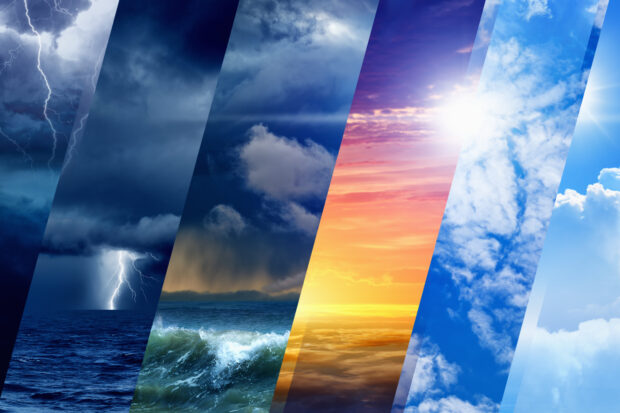"Rain, rain, go away...". According to folklore, whatever the weather pattern established on St Swithin's Day (July 15), it is bound to continue for the next 40 days. While our ancestors relied on such weather proverbs and carefully observed the skies, most of us now simply reach for our mobile phones to check the forecast with a quick tap or swipe.

This convenience is made possible by revolutionary technologies protected by intellectual property (IP) rights. From supercomputers running complex mathematical models to satellite systems that track storms from space, IP has shaped how we predict whether to pack an umbrella or sunscreen.
The visionary minds behind weather forecasting
It was British mathematician Lewis Fry Richardson who joined the Met Office in 1913, long before computers existed, and laid the groundwork for modern weather forecasting. His ground breaking 1922 book "Weather Prediction by Numerical Process" established the mathematical principles that would eventually transform meteorology.
Richardson famously imagined a "forecast factory" with thousands of human computers working together to solve equations - a concept that would later be realised through supercomputing technology. His vision was decades ahead of its time, requiring computing technology that wouldn't exist until the 1950s. Richardson’s story is an example of how intellectual creativity can drive scientific progress.
Patently predictable
We have gathered some fascinating weather-related patents from both the past and present that showcase the evolution of innovative weather forecasting technology:
Apparatus for Applying Meteorological Observations to the Forecasting of Weather - GB191506276A
Way back in 1915, Eric Wilfred Kitchin obtained a patent for an invention using movable pieces of cardboard with meteorological data scales. When properly adjusted, these pieces would reveal a forecast appropriate to the current conditions—a remarkably practical solution for its time.
![Patent drawings for a Apparatus for Applying Meteorological Observations on background of blue sky and clouds. Text reads: Patent Number: GB191506276A, Title: Apparatus for Applying Meteorological Observations to the Forecasting of Weather, Applicant: Eric Wilfred Kitchin and Filed on: 27 April 1915.
Background image credit [goir]/Adobe Stock.](https://ipo.blog.gov.uk/wp-content/uploads/sites/124/2025/07/Untitled-9-620x438.png)
Automatic Weather Forecasting Device - GB2261536
This patent covers an automated system with multiple sensors measuring weather factors including temperature, humidity, air pressure, wind speed and luminosity. The data is analysed by a microcomputer that predicts future values based on previously sensed data. The device even includes self-learning capabilities to adaptively correct sensing and forecasting errors.
Contextual Weather Information - GB2488916
Rather than generic forecasts, this innovative patent provides dynamic, contextual weather information for specific vehicle routes, such as flight plans. The technology delivers targeted weather details relevant to specific journeys, helping travellers prepare for conditions they'll actually encounter, enhancing both safety and efficiency.
Predicting Weather Radar Images - GB2604765
This patent owned by IBM and granted in 2023 uses machine learning models to generate predictive radar images based on forecast data. The sophisticated technology combines multiple AI models to improve forecasting accuracy—taking weather prediction far beyond what was possible even a decade ago
Severe Weather Situational Awareness System - GB2546628
Granted in 2018 to Harris Corporation, this patent describes a system collecting atmospheric sounding data from satellites to detect and warn of severe weather events. This technology helps communities prepare for dangerous conditions, potentially saving countless lives and protecting property through earlier and more accurate warnings.
So, take a moment next time you check your weather app to appreciate the remarkable journey of innovation and intellectual property protection that makes it possible. From Eric Kitchin's simple cardboard apparatus in 1915 to today's satellite-based severe weather warning systems, each technological advancement has been carefully recorded, allowing brilliant minds to build upon previous discoveries.
While traditional weather folklore may still have its charm, the somewhat more reliable forecasts we depend on daily represent centuries of IP-protected development in meteorological technology aiming to ensure we're never caught without an umbrella when British skies decide to open.
If you're inspired by these weather innovations and have your own invention to protect, the Intellectual Property Office provides comprehensive guidance on applying for patents. Getting the right IP protection could help turn your innovative idea into tomorrow's essential technology.
Leave a comment